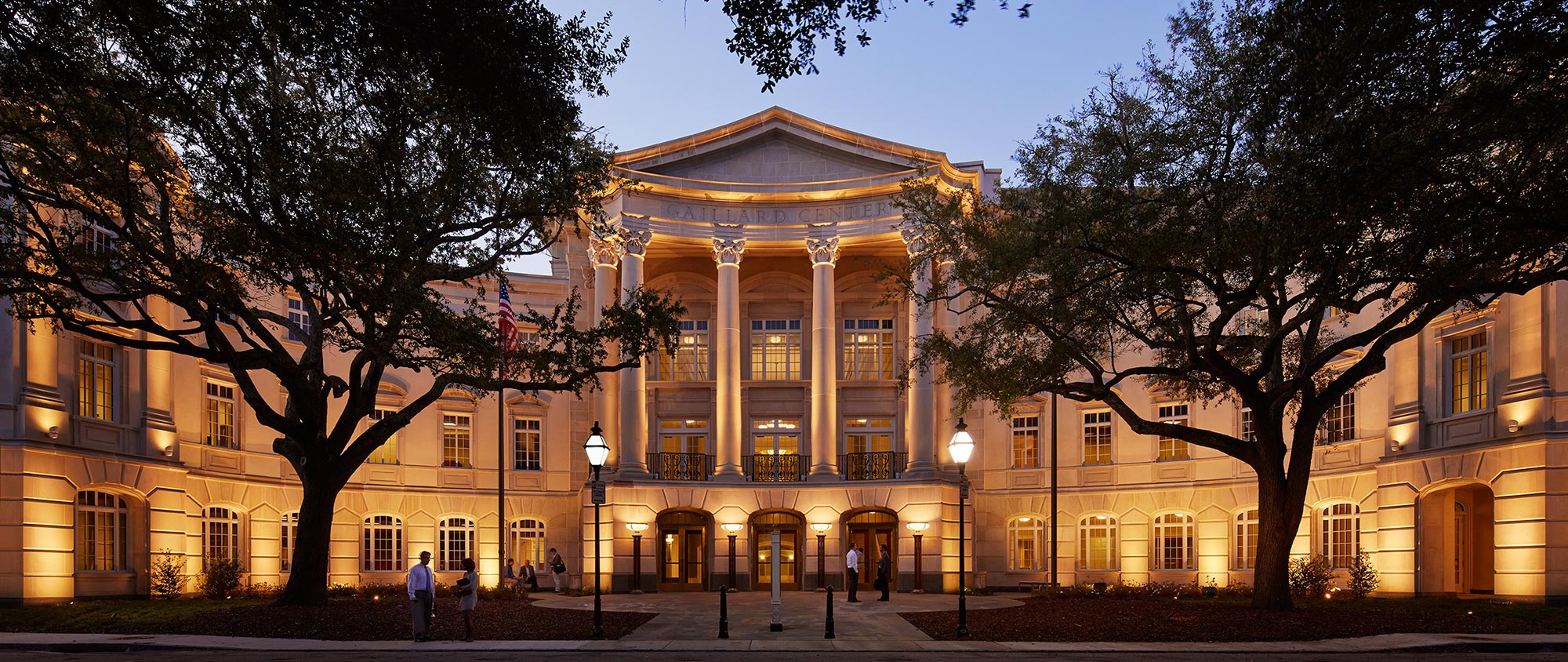Home to many Spoleto Festival USA performances, the Gaillard Center is close to our hearts—figuratively and literally, as it stands just a few steps from the Festival headquarters at 14 George. This Festival season, the Gaillard Center features several fabulous performances: a tribute to Spoleto’s late Director of Chamber music Geoff Nuttall; the Pulitzer Prize winning opera Vanessa; the Scottish Ballet’s adaptation of The Crucible; and a Spoleto Festival USA Orchestra showcase, including The Rite of Spring conducted by John Kennedy, Mei-Ann Chen leading the New World Symphony, and Symphonie Fantastique lead by Jonathon Heyward. Undoubtedly, though, there are many Hidden Secrets of the Gaillard.
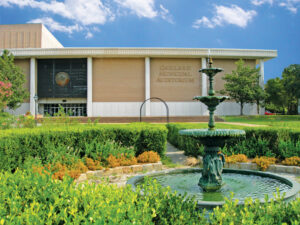
Pre-renovation Gaillard Center
1. It was originally called “Civic Auditorium”
Nine years old when the first Spoleto Festival kicked off in 1977, the Gaillard Center—then called the Civic Auditorium—was built in 1968 as an all-purpose facility. It was soon renamed after the former Charleston City Mayor, J. Palmer Gaillard, a predecessor to Joseph P. Riley. While the Civic Auditorium had a stage, its original construction, was not suited for many arts performances due to its size, poor acoustics, and minimal backstage facilities.
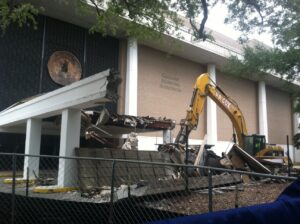
Starting renovations in 2012.
2. Renovations began in 2012, with Joseph P. Riley on a backhoe
While renovations had been on the radar for the Gaillard Center as early as 1987, no plans seemed realistic until 2008. It was then that Spoleto Festival USA General Director Nigel Redden and Board Chair Martha Ingram conducted a study on what could be done to transform it into a fitting performance hall. They pitched their ideas to Mayor Riley and were soon notified of an anonymous $20 million donation which undoubtedly became the push needed to begin the full-blown renovations in 2012.
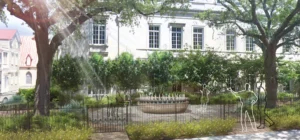
Rendering of the Anson Street African Burial Ground memorial design provided by Outdoor Spatial Design and ASABG Project.
3. The construction uncovered an unmarked grave of 36 African Americans from the 18th Century.
This discovery was chilling to construction crew in February 2013, though they did not know yet the full magnitude of what was uncovered. Archeologists soon excavated the burial ground and found 36 sets of African remains dating back to the 1700s. Their findings included men, women, and children who were assumed to be remains from enslaved people. Archaeologists also found that the individuals were buried around different times, “some in wooden coffins, some wearing clothes with buttons, and some wrapped in a shroud. A child was buried with a glass bead, possibly in her hair, while another had coins placed over his eyes,” notes The Gaillard Center.
Dr. Ade Ofunniyin, a cultural anthropologist and the founding director of the Gullah Society, made a request to the City of Charleston to rebury the African Ancestors in 2017. The Anson Street African Burial Ground research team started the memorialization process, which included DNA research, holding community conversations and education initiatives, and conducting ceremonies (including a Naming ceremony for the Ancestors).
On May 4, 2019, the Ancestors were reinterred into a vault beside the Gaillard Center and rest there today. “We recognize the anniversary of the reinternment of our African Ancestors near the Gaillard every year through storytelling, drumming, and the pouring of libations.” The 4th anniversary was celebrated recently on May 6, 2023, with speeches by Reverend Willie Hill, Charleston Gaillard Center CEO Lissa Frenkel, Denny’s Chairman and Anson African Memorial Committee Chair Brenda Lauderback, Sculptor Stephen L. Hayes Jr. and the Director of the Center for the Study of Slavery in Charleston, Dr. Bernard Powers.
A memorial fountain is being developed by sculptor Stephen Hayes which will include 36 pairs of bronzed hands with each set representing one of the Ancestors found. “You think about the representation of my people, of the people who came before me—it’s special an opportunity to be a part of something like this- and to also bring the community to be a part of this—because it’s going to be a story that’s going to be told from generation to generation,” said Hayes to ABC News. The memorial (website here) is still under construction and is expected to take more than a year to complete.
The Anson Street African Burial Ground team is still currently conducting DNA research to learn more about the individuals and their ancestry. More information on how you can help here.
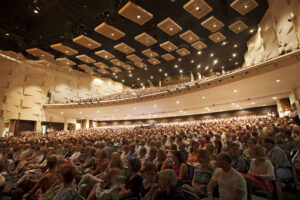
K.D. Lang at the Gaillard
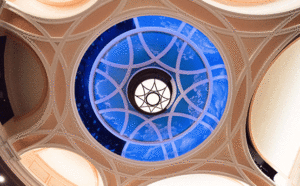
Ceiling detail at the Gaillard
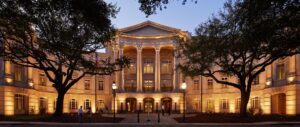
Completed Gaillard Center
4. Renovations completed in 2015
Though Spoleto Festival USA was hopeful that the Gaillard Center would be ready for a grand re-opening in time for the 2015 Festival, by November 2014 it was clear the construction was going to continue for nearly a year. It was announced a week before the 2015 Festival that the Gaillard Center would reopen instead later that fall, in October. The Charleston Symphony Orchestra conducted by Ken Lam performed featuring cellist Yo-Yo Ma as a soloist.
Interested in visiting this grand venue during Spoleto? Check out these performances:
Celebrating Geoff Nuttall, Vanessa, The Scottish Ballet: The Crucible, The Rite of Spring, New World Symphony, and Symphonie Fantastique.

